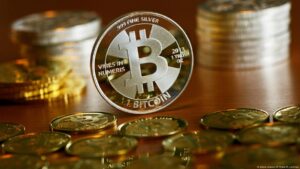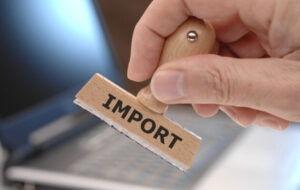
Over the past seven days, the cryptocurrency market has experienced significant volatility — panic selling, record liquidations of leveraged positions, further recovery, and new records. Here are the main trends, facts, and forecasts from Fixygen:
On Friday, one of the largest sell-offs in recent times took place: according to media reports, more than $19 billion in cryptocurrency positions were liquidated under the influence of news about US tariff measures against China. Bitcoin, which had previously risen to $125–126 thousand, underwent a correction and decline.
Simultaneously with the correction, data appeared on record inflows into global cryptocurrency ETFs — $5.95 billion in a week. This indicates that institutional players remain interested in digital assets even amid volatility.
Amid uncertainty in the financial markets, gold set a new record, surpassing the $4,000/ounce level.
This reinforces the argument about the role of traditional assets as “safe havens” during financial market turmoil.
Bitcoin: after a correction, it held support below $110,000, but during the week, it recovered to levels around $114,000–$122,000. Ether (ETH): fell by about 4–5% on a weekly basis amid corrective sentiment. Altcoins: some coins from the protocol segment showed high volatility — strong rebounds, changes in dominance. At the same time, BTC (BTC.D) dominance increased: investors temporarily returned to a more “reliable” asset due to pressure on altcoins.
What lies ahead? Most likely, further volatility. If uncertainty continues, investors may again move towards BTC or stablecoins, leaving altcoins behind. If US or EU regulators make positive decisions, this could give the market new momentum.
Experts predict that frequent “shiny” rises will be followed by sharp declines — players should be prepared for smooth entry/exit.

IC “Express Insurance” (Kiev) in January-September 2025 collected insurance premiums in the amount of UAH 881,8 million, which is UAH 205,4 million or 30,4% more than in the same period of 2024, the insurer’s website reports.
Premiums under hull insurance contracts for this period reached UAH 587,9 mln, which by UAH 57,3 mln, or by 10,8%, exceeded the indicator of January-September 2024, under CMTPL insurance – UAH 274,9 mln (+116%), under other types of insurance – UAH 18,1 mln (+3,6%).
The Company informs that in January-September 2025 the total volume of insurance indemnities on insured events amounted to UAH 365,2 mln. Including payments to clients under CASCO – UAH 287.5 mln, victims under MTPL – UAH 71.9 mln.
As reported, as of July 1, 2025 the assets of IC “Express Insurance” amounted to more than one billion UAH, which is by 180,9 million UAH more than in the same period of 2024, their share in cash amounted to 88%, which ensures the operational ability of the company to pay compensation for insurance events.
IC “Express Insurance” was founded in 2008 and is a part of the group of companies “UkrAVTO”. It specializes on automobile insurance. Stable high speed of events settlement in IC is provided by optimal interaction with partner service stations.

The Bundestag has decided by majority vote to cancel the so-called “accelerated” (turbo) citizenship procedure introduced in June 2024. 450 deputies voted in favor of the abolition, 134 against and 2 abstained.
Under the terms of the previous scheme, foreigners could apply for naturalization after only three years of residence upon demonstration of “special integration” – command of the German language at the C1 level, outstanding achievements in studies, volunteering or professional activities. However, only a few people have been able to take advantage of the scheme: in 2024, it was used to naturalize dozens of people in German states such as Rhineland-Palatinate and Baden-Württemberg, where 20 and 16 cases were registered respectively.
The “turbo citizenship” was originally initiated by the center-left SPD-Greens-SVD (“traffic light”) coalition, but after its collapse and the advent of the CDU/CSU coalition with the SPD, new Chancellor Friedrich Merz succeeded in getting this part of the reforms reversed. The coalition agreement retained the rest of the reforms – such as the right to dual citizenship for non-EU citizens and the reduction of the naturalization period from eight to five years – but the fast-track scheme was eliminated.
Despite the changes in civil policy, Germany remains a key host country for migrants and asylum seekers. According to the Federal Office for Migration and Refugees (BAMF), Germany received 230,000 initial asylum applications in 2024.
According to the UNHCR (at the end of 2023), there were almost 3 million refugees in Germany, of which more than 1.2 million Ukrainians who were granted temporary protection status.
The abolition of accelerated naturalization may be the government’s response to societal concerns about increased migration and pressure on social services, especially in the context of changes in migration policy and increased integration requirements.
http://relocation.com.ua/germany-withdraws-accelerated-naturalization-of-foreigners/

Imports of trucks to Ukraine in January-September 2025 grew by 11.6% in monetary terms compared to the same period in 2024, reaching $740.18 million, according to statistics from the State Customs Service.
According to the published data, the growth rate of imports of this type of vehicle accelerated, in particular, in the first half of the year, it amounted to 6.2% compared to the same period in 2024.
In September, truck imports increased by 32.7% compared to September 2024, reaching $105.8 million.
Most of the trucks were imported from Poland in the first nine months, accounting for $141.12 million (19% of the total), followed by France with $115 million (15.5%) and the United States with $102.4 million (13.8%).
A year ago, the top three truck supplier countries were the same, with Poland importing $137.8 million, France $78.3 million, and the US $66.2 million.
Imports from all other countries increased slightly in January-September, amounting to $381.7 million.
At the same time, according to statistics, Ukraine exported only $4.4 million worth of trucks in nine months, mainly to Turkey (52.7% of exports), Romania (41%), and Moldova, while a year earlier there were even more insignificant export deliveries ($2.4 million), mainly to Moldova, Poland, and Kazakhstan.
As reported, in 2024, imports of trucks to Ukraine in monetary terms increased by 30% compared to 2023, to $947.84 million, with most of them imported from Poland (almost 20%).

The volume of tractor imports to Ukraine in January-September 2025 amounted to $629.41 million, which is 6.2% more than in the same period of 2024 ($582.56 million), according to statistics from the State Customs Service. According to the published statistics, tractors were mainly imported from the US (20.7% of total imports of this equipment, or $130.2 million), China (almost 18% or $113 million), and Germany (16.7% or $105.3 million), whereas a year ago it was Germany (almost $90 million), China ($82.3 million), and the Netherlands ($78 million).
At the same time, imports from other countries in January-September decreased by 17.9% to $280.9 million, and their share in the total volume of tractor imports decreased to 44.6% from 57.8%.
In September this year, tractor imports to Ukraine increased by 23.6% compared to September 2024, to $73.7 million.
Since the beginning of this year, as reported, tractor imports to Ukraine have shown negative dynamics: in January, they were down by a third compared to January 2024, but by the end of the first half of the year, the figures were almost on par with last year’s.
According to statistics from the State Customs Service, $4.5 million worth of tractors were exported in January-September this year, mainly to Romania (28%), Belgium, and Germany, while last year’s exports for the same period amounted to $4.1 million, mainly to Moldova (28%), Kazakhstan, and the Czech Republic.
As reported, tractor imports to Ukraine in 2024 amounted to almost $784 million, 5.6% less than a year earlier, while exports amounted to $5.44 million compared to $5.74 million.

In January-September 2025, Ukraine increased its imports of petroleum products by 3% (166,823 thousand tons) compared to the same period last year, to 5 million 665,761 thousand tons.
According to the State Customs Service, petroleum products were imported in the amount of $4 billion 566.46 million, which is 11.1% less than in the first nine months of 2024 ($5 billion 133.869 million).
Fuel worth $695.185 million was imported from Poland (15.22% share), Greece – $595.812 million (13.05%), Lithuania – $569.152 million (12.46%), other countries – $2 billion 706.311 million (59.26%).
As reported, Ukraine imported 7 million 562.556 thousand tons of petroleum products in 2024, which is 1.1% less than in 2023 (7 million 646.537 thousand tons).